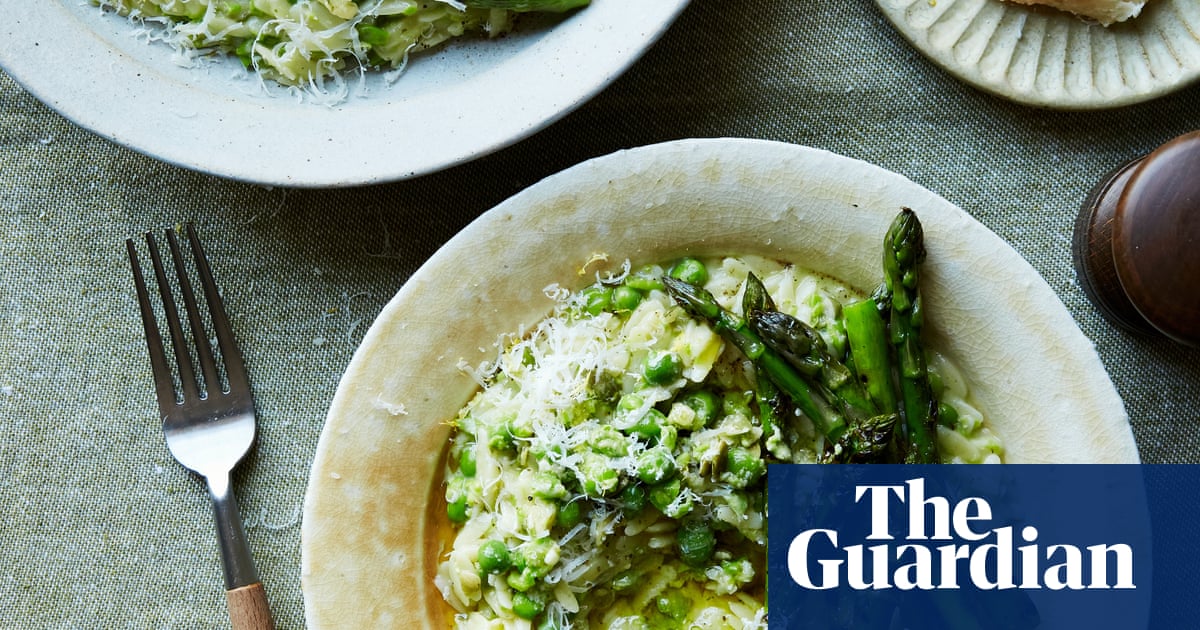This dish manages to be simultaneously spring-like and comforting, thanks to the intense flavour from the pea pesto. Telling you to stir whole peas through orzo feels a bit too much like nursery food, but if you are serving this to small children who are amenable to pesto pasta (mine are not), I’d suggest finely blitzing the pumpkin seeds before adding them to the pesto, because they’re quite large pieces otherwise. Top with seasonal asparagus and this is the perfect dinner to eat outdoors on a warm spring evening.
Prep15 minCook15 minServes2
Sea salt flakes180g orzo200g asparagus50ml olive oil, plus 1 tbsp extra for the asparagus180g podded fresh peas, or frozen peas50g pumpkin seeds50g parmesan, grated (a vegetarian one, if need be)Juice of½ lemon
Bring a large pan of well-salted water to a boil, then tip in the orzo and cook for eight minutes, or until cooked through but still a bit al dente. Drain well, and reserve a mugful of the cooking water.
Meanwhile, set a griddle pan on a high heat. Toss the asparagus with a tablespoon of oil to coat, then grill for two minutes on each side (you may need to do this in batches). Transfer to a plate and scatter with some sea salt flakes.
Meanwhile, blanch the peas by tipping them into a bowl of boiling water, leave to steep for two minutes (or three minutes if using frozen), then drain well. Tip the peas into a food processor, add 50ml oil, the pumpkin seeds and the grated parmesan, and blitz to a coarse paste.
Stir three-quarters of the pea pesto through the drained orzo, adding a couple of tablespoons of the pasta cooking water to loosen, if need be – you want the pasta to flow gently across the plate, rather than sit in a big heap. Taste and add lemon juice and salt as needed (if your pasta water was well salted to begin with, you shouldn’t need much).
Divide the orzo between warmed shallow bowls, top with the remaining pea pesto and the griddled asparagus, and serve at once.
